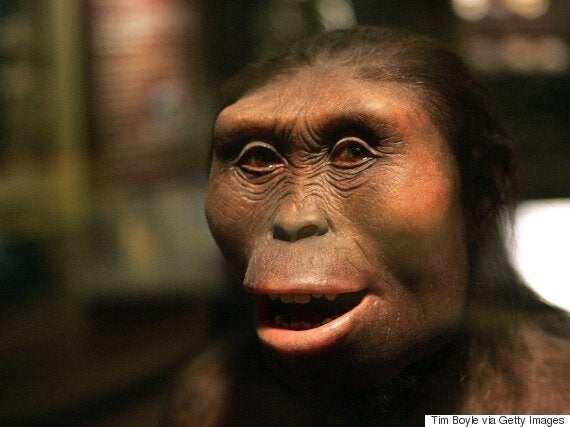Scientists have unearthed the remains of what they believe is another ancient human species, in Afar Ethiopia.
The discovery of 3.3 to 3.5 million-year-old jaw bones and teeth suggest the existence of a fourth ancient human species, which researches have named Australopithecus deyiremeda

What this ultimately tells us is that Lucy, the most famous ancient human, had company.
The fossils were found in Woranso-Mille, the same area in which scientists dug up Lucy's remains in 1974.
The reason the latest collection of fossils suggests that an entirely different species of early humans existed is because of the thick enamel present on Australopithecus deyiremeda's molars and its smaller canines. Both factors are are evidence that it may have had a different diet to other ancient humans.
READ MORE:
- Ancient Skull Sheds New Light On Human-Neanderthal Sex
- Humans And Neanderthals Interbred, 36,000-Year-Old Genome Reveals
- Fossils May Belong To New Primitive Human Species
- Now We Know Why Britain's 'Oldest Human Brain' Looked Pristine Even After Thousands Of Years
- Signs Of Breast Cancer Seen In Ancient Egyptian Skeleton
The species name "deyiremeda," means close relative in the language spoken by Afar people and highlights an important biological point -- humans may have had more ancient relatives than we first thought.
Haile-Selassie said, "Current fossil evidence from the Woranso-Mille study area clearly shows that there were at least two, if not three, early human species living at the same time and in close geographic proximity.
She did however, explain the potential skepticism that her research might meet from fellow anthropologists and evolutionary biologists.
This new species from Ethiopia takes the ongoing debate on early hominin diversity to another level," said Haile-Selassie.
"Some of our colleagues are going to be skeptical about this new species, which is not unusual. However, I think it is time that we look into the earlier phases of our evolution with an open mind and carefully examine the currently available fossil evidence rather than immediately dismissing the fossils that do not fit our long-held hypotheses."
Either way, the new research confirms what we've known along -- our family tree is more complicated than we thought.
Also: Look At These Incredible Pictures From The Olympus BioScapes Photography Competition